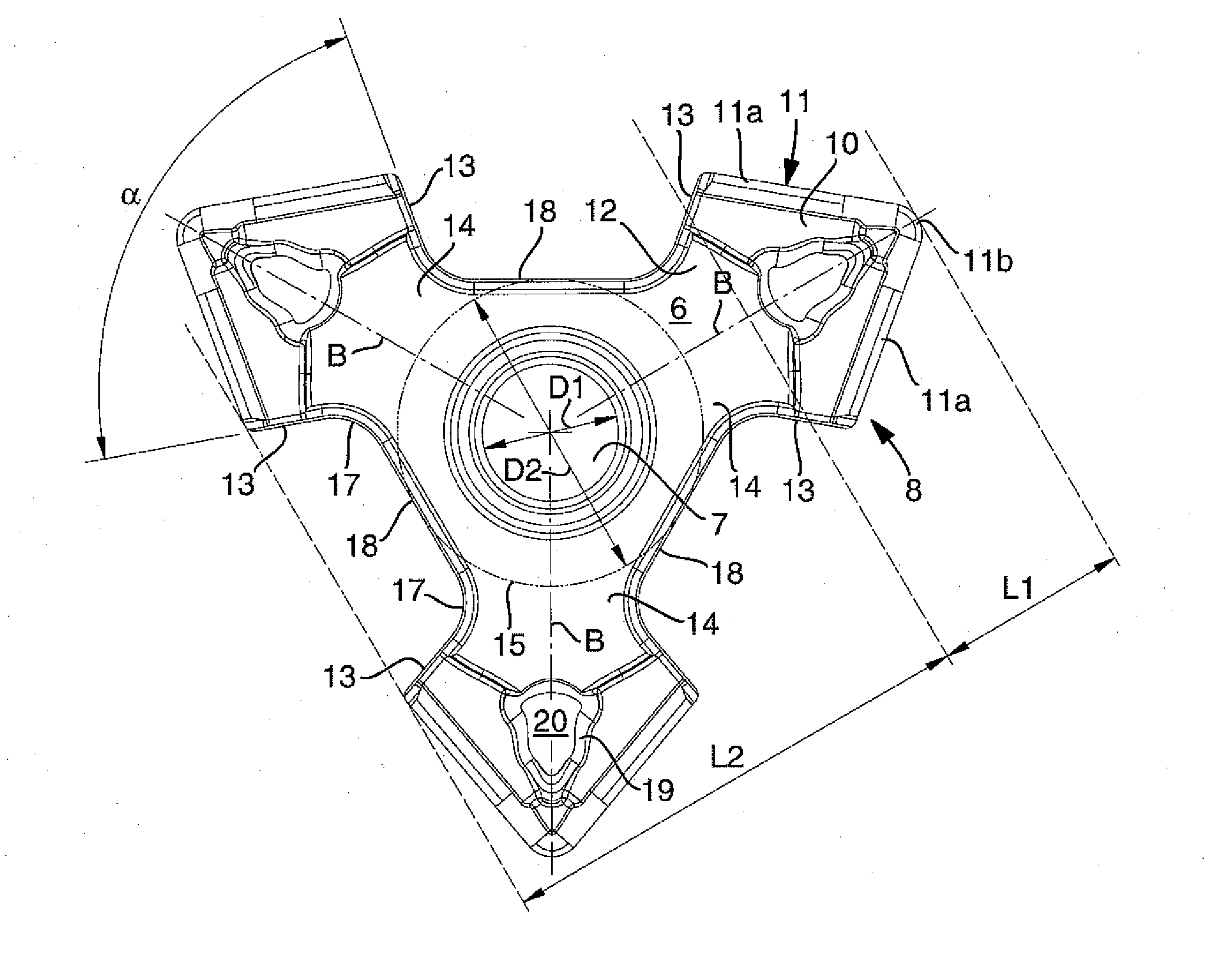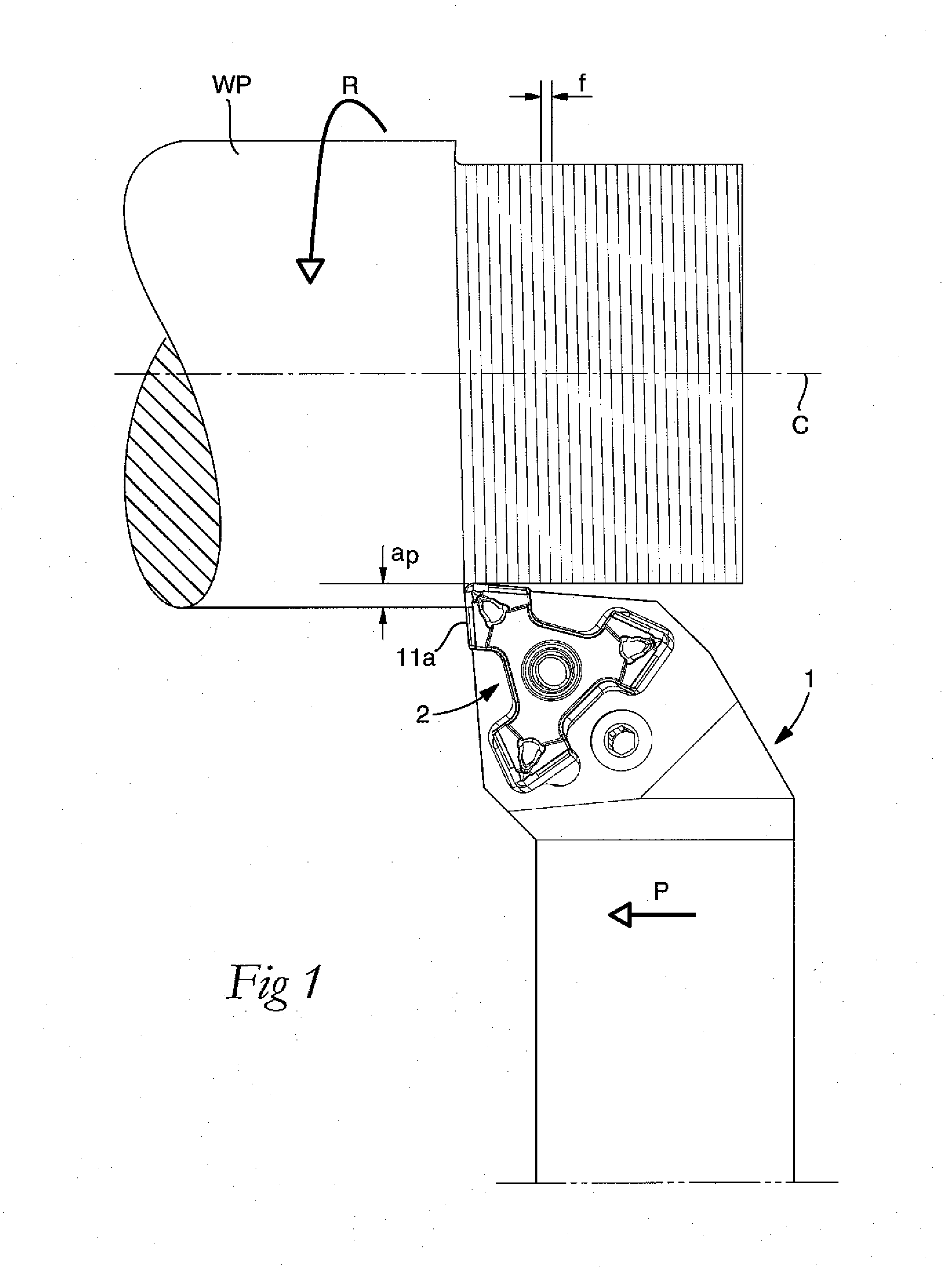Tool for chip removing machining as well as a solid indexable cutting insert and a solid basic body therefor
a chip removal and tooling technology, applied in the direction of cutting inserts, manufacturing tools, shaping cutters, etc., can solve the problems of extreme position precision requirements, unprogressed development, and the cutting edge in relation to the seat of the basic body may deviate to such a high degree from the desired position, so as to reduce the cost of tools
- Summary
- Abstract
- Description
- Claims
- Application Information
AI Technical Summary
Benefits of technology
Problems solved by technology
Method used
Image
Examples
Embodiment Construction
[0029]In this document, the concepts “upperside” and “underside” are used to create conceptual clarity and simplify the description of the cutting insert. These concepts are literally relevant when a cutting insert is single sided, i.e., includes cutting edges only along the periphery of the upperside. When the cutting insert (in its most preferred embodiment) is double-sided and includes cutting edges along the upperside as well as the underside, any one of the upperside and the underside can, however, be turned upward in the basic body of the tool.
[0030]By the concept “cavity”, one of a plurality of relatively small recesses or hollows should be understood, which together with a common, central hollow space in the basic body of the tool forms a seat in which the cutting insert can be placed. Each such cavity has the purpose of housing a head formed in the cutting insert irrespective of whether a cutting edge included in the same is active or not.
[0031]Although the invention could ...
PUM
| Property | Measurement | Unit |
|---|---|---|
| angle | aaaaa | aaaaa |
| angle of convergence | aaaaa | aaaaa |
| angle of convergence | aaaaa | aaaaa |
Abstract
Description
Claims
Application Information
 Login to View More
Login to View More - R&D
- Intellectual Property
- Life Sciences
- Materials
- Tech Scout
- Unparalleled Data Quality
- Higher Quality Content
- 60% Fewer Hallucinations
Browse by: Latest US Patents, China's latest patents, Technical Efficacy Thesaurus, Application Domain, Technology Topic, Popular Technical Reports.
© 2025 PatSnap. All rights reserved.Legal|Privacy policy|Modern Slavery Act Transparency Statement|Sitemap|About US| Contact US: help@patsnap.com



